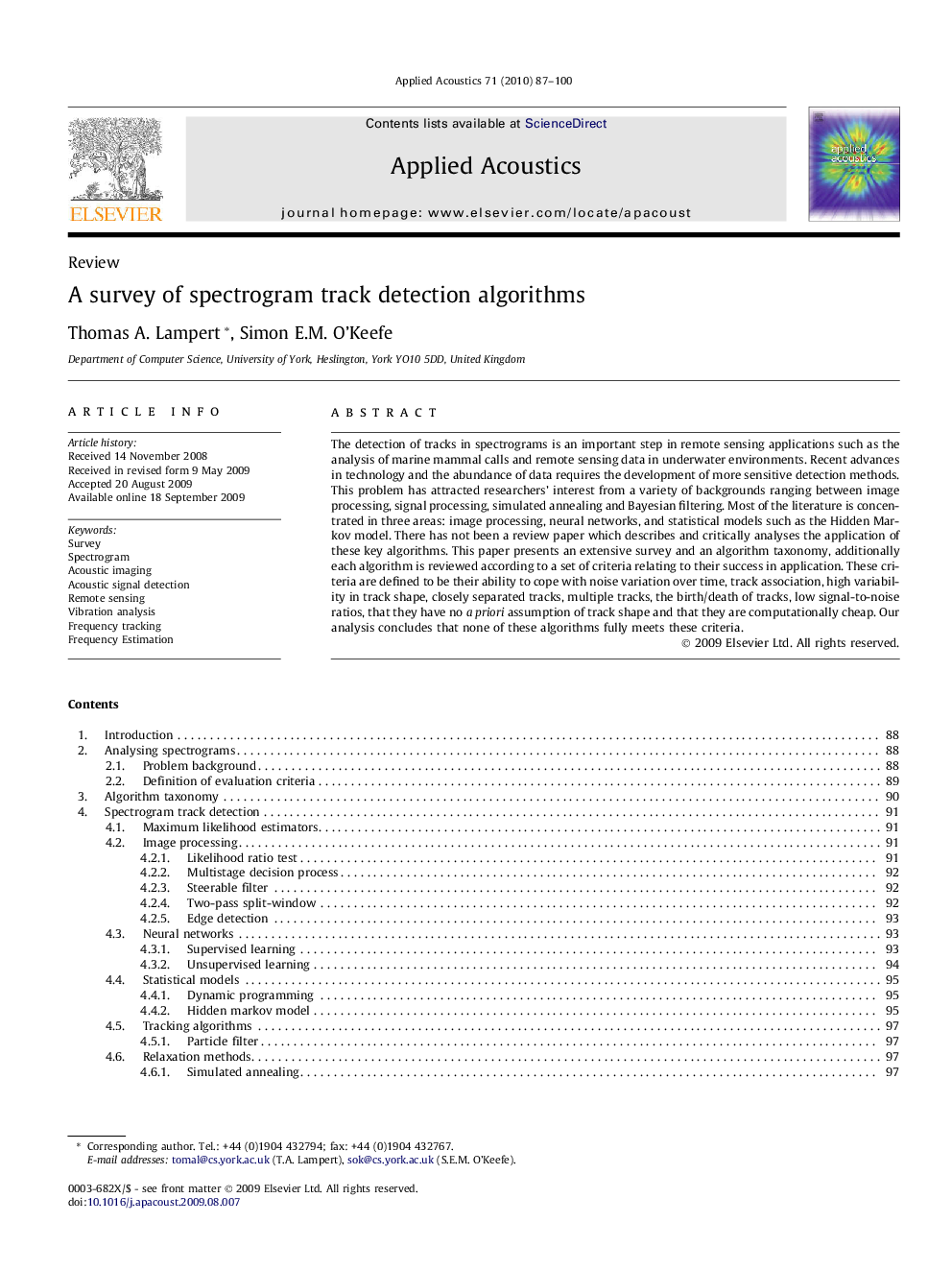| Article ID | Journal | Published Year | Pages | File Type |
|---|---|---|---|---|
| 761607 | Applied Acoustics | 2010 | 14 Pages |
The detection of tracks in spectrograms is an important step in remote sensing applications such as the analysis of marine mammal calls and remote sensing data in underwater environments. Recent advances in technology and the abundance of data requires the development of more sensitive detection methods. This problem has attracted researchers’ interest from a variety of backgrounds ranging between image processing, signal processing, simulated annealing and Bayesian filtering. Most of the literature is concentrated in three areas: image processing, neural networks, and statistical models such as the Hidden Markov model. There has not been a review paper which describes and critically analyses the application of these key algorithms. This paper presents an extensive survey and an algorithm taxonomy, additionally each algorithm is reviewed according to a set of criteria relating to their success in application. These criteria are defined to be their ability to cope with noise variation over time, track association, high variability in track shape, closely separated tracks, multiple tracks, the birth/death of tracks, low signal-to-noise ratios, that they have no a priori assumption of track shape and that they are computationally cheap. Our analysis concludes that none of these algorithms fully meets these criteria.
